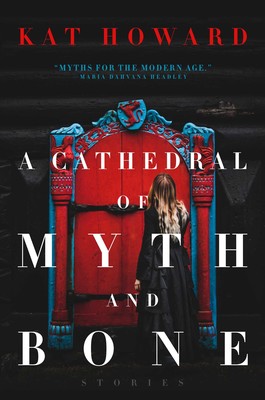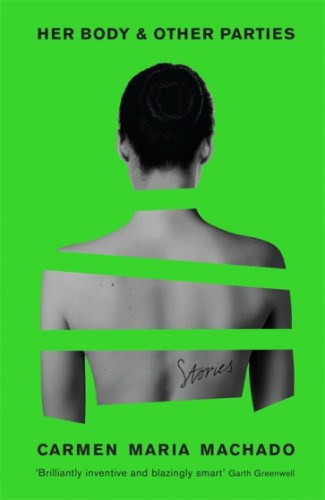Books Read, Early September
Orange World by Karen Russell
A collection of longer short stories that take on ordinary themes through strange, and estranging, lenses; whether climate change and family through echolocation, or maternity through pacts with the (a?) devil, or depression through tornado farming, Russell uses estrangement to tell moving and very human stories about the everyday. The variety of themes and approaches to the weird and to different aspects of humanity is revealing and beautifully executed. I need to seek out more of Russell’s fiction: if it’s all like this, I’ve clearly been missing out!
Hidden Nature by Alys Fowler
Read for LGBT+ Book Group. A good story (memoir) poorly told: while Fowler’s coming out, her canal expeditions, and her nature knowledge are all fascinating individually, the way they’re combined in this volume feels a little messy. Each detracts from the others, bouncing around and feeling a little disjointed. There’s also no sense of time; it’s unmoored from chronology, with no real idea how long anything takes, or how much time passes between different things: it’s only at the end in the conclusion that the total time becomes clear. Still probably worth reading, but it would have been better either restructured or as two different books: coming to this as either memoir or nature writing, the reader will likely leave disappointed.
The Princess Who Flew With Dragons by Stephanie Burgis
The third part of Burgis’ series that began with The Dragon With the Chocolate Heart, The Princess Who Flew With Dragons is very much in line with the earlier books; a light and gentle children’s story with a big heart and a message about family, belonging, selfhood, and coming into one’s own strengths. This one gets a little deeper into philosophical territory than earlier volumes, and fails to fully engage with that territory – it edges into questioning the nature and use of power, but dips away before ever really doing so, and falls down in its treatment of the kobolds – but it might make children want to know more about ideas around power, and that can only be good. All in all, another rather lovely installment in the series.
Chilling Effect by Valerie Valdes
Valdes’ debut novel is, unashamedly, openly, and with a lot of jokes, a good, fun Mass Effect fanfic, with elements from another couple of videogames thrown in for good measure, drawing on the relationship drama, worldbuilding, humour, and some of the ideas from the first two Mass Effect games. That’s far from a criticism: those games are excellent at dealing with character, and their main plots work well, and Valdes doubles down on both those elements, with a diverse, human cast (including the aliens), and a plot that deals with some big questions in a fun and enjoyable way while never losing sight of the essential goal of entertainment. The book has a really strong interest especially in family, found and natal, and has interesting things to say about both of them. It isn’t the most serious science fiction on the market, but it is probably the most fun. NOTE: I read this as an ARC, received as a gift from the author, who is a friend.
Murder Most Unladylike by Robin Stevens
The first of the Detective Club stories is quite an interesting creature; obviously in the tradition of both Dorothy Sayers (though its characters want to think it’s more Sherlock) and of Enid Blyton, it has that very upper class sensibility of both authors, and the first half is rather a slow affair. That suggests a far more frustrating read than is actually the case, though; Stevens goes out of her way to deconstruct and actually engage with a number of the tropes of Blytonesque boarding school novels, as well as the racism and specifically Orientalism of 1930s Britain and the treatment of intelligence in the British upper classes and educational system. It’s also a subtly queer novel (bisexual characters! even if one is dead), and the mystery is satisfyingly resolving, matching all the clues while also – for this reader at least – coming straight out of left field. Well executed, and I’ll need to look out the sequel soon…
Gentlemen of the Road by Michael Chabon
The working title of this novel, discussed in Chabon’s afterword, is entirely accurate: Jews with swords. Gentlemen of the Road isn’t high literature, or late-century naturalism, or anything like that; it’s a pure, fun, simple romp. It’s Fritz Leiber, or Robert E. Howard, or any of those other purveyors of sword and sorcery, but without the sorcery, and with a lot more Jewry. It’s not particularly clever, and a lot of the twists are very visibly telegraphed, but that’s almost the point of books like these: they’re not there to be high literature, they’re there to be good, enjoyable, simple fun, and Chabon has delivered that in spades.
Mythic Dream eds. Dominik Parisien & Navah Wolfe
Reviewed here.
The Gurkha And The Lord of Tuesday by Saad Z. Hossain
Hossain’s novella is a fun, feisty creature; a brief punch of politics mixed with myth and folklore, wrapped around a very human core. Hossain balances the different elements very well, and the earthiness of the Lord of Tuesday blends well into a world that seems to have become removed from that earthiness. The book as a whole is something of a parable about utopia, and the costs and risks of building utopia, and how we go about it; the end is a brilliant, beautiful moment, one that makes everything that’s gone before that much more powerful and thoughtful. For all its humour and crudeness, this is a deeply intelligent little book.
Witches Abroad by Terry Pratchett
Reread. For the nth time. The Watch and the Witches are my two favourite strands of Discworld, and this is probably my favourite of the Witches books; like all of them, it engages with story, but in this case, it engages in a very active way, with ideas of fairytale, and creating story, and playing with story. As usual Pratchett’s characters are strong and leap off the page with a life of their own, and the book is endlessly quotable; parts of it have dated a little, but its treatment of Voodoo is, if anything, better than most mainstream contemporary portrayals. Why there’s no Witches TV adaptation in the works is beyond me, honestly… Nanny Ogg, Magrat Garlick, and Granny Weatherwax sparking off each other would be the best core cast in all of entertainment.
The Memory Police by Yoko Ogawa, trans. Stephen Snyder
Ogawa’s novel is a strange, creepy, creeping book; it reminds me of Karin Tidbeck’s Amatka, with its strange dystopia of rules and constant surveillance, and a science fictional underpinning that is never explained, just allowed to exist. The creeping narrative in Ogawa’s book is inevitable and unsurprising – indeed, there are no twists here, it’s exactly the narrative you imagine at the start; but the execution is beautiful. The narrative within a narrative plays a fascinating counterpoint to the main narrative, and the balance between the two is achieved excellently; both are about agency and loss and control, and well written. The book’s big flaw is its beauty; it seems to be too in love with its own narrative voice and its own intricacy, especially at the start, at the expense of character or plot, although the former of those at least is addressed as the book goes on and the characters shine through.
Aliette de Bodard on Motherhood and Erasure
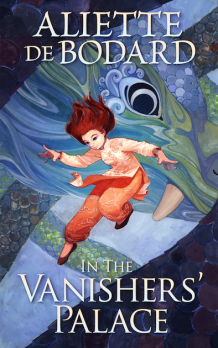
Back when The House of Binding Thorns came out last year, Aliette de Bodard wrote a guest post for this blog about the treatment of pregnant people and the trope of dead mothers in science fiction. Now that In the Vanishers’ Palace, a brilliant queer retelling of Beauty and the Beast set in a science fictional universe and with mothers playing key roles in the plot, has come out, she’s back here with a follow up…
On motherhood and erasure: people-shaped holes, hollow characters and the illusion of impossible adventures
I’d expected motherhood to impact my life, because of course having young people in the household and being responsible for them will bring about huge changes.
I hadn’t expected it to make me so keenly aware of erasure in media and stories.
To put it bluntly, mothers are just not there [1]. While pregnancy is either monstrous or sacred, either body horror or the delivery of the chosen child, motherhood is defined by its absence. We aren’t characters: we are people-shaped holes. We are empty spaces or hollowed-out characters, whose sole purpose–when the story bothers to give us one–is to erase ourselves for the sake of our children.
By far the most obvious hole is that left by death: our books and media are littered with the death of mothers of main characters. Star-Lord’s mother in Guardians of the Galaxy, Elizabeth Swann’s mother in Pirates of the Caribbean, Indiana Jones’s mother in The Last Crusade–the list is endless. The death can be at birth, can be off-stage, can be in the story, but it’s always either a minor inconvenience, something so far ago that it’s never even mentioned, or mined for a main character’s pain (and said character is almost always a cis man). We talk a lot about the fridging of women characters (and rightfully so): whenever a mother walks on stage I brace myself for the slamming of the refrigerator door, for it seems that we belong there permanently, our corpses there to serve, at best, as pleasant memories or motivations for our children. Nothing quite becomes us in life as our leaving it.
But there are other deaths. There are the mothers not mentioned and not named, as if they were utterly trivial (Belle’s mother is never mentioned in the original Beauty and the Beast; Arwen’s mother is similarly not mentioned in the Lord of the Rings movies [2], Killmonger’s father in the otherwise excellent Black Panther gets plenty of screen time, his mother doesn’t even rate one explanation). And then there are mothers who fail to have a story other than caring for their children, whose entire personality and motivations are subsumed in the act of motherhood (Lady Jessica in Dune, Frigga in the Thor franchise, who actually manages to both fail to have a plotline unrelated to her two kids and to be fridged in the second Thor movie).
One of the ways in which is this utterly toxic, in addition to killing off the actual characters, is that this devalues the work done by mothers by making it seem invisible and unnecessary: we seldom see the tremendous amount of work that goes into raising children (because dead mothers are usually replaced with indifferent, absent or abusive authority figures rather than warm adoptive parents [3]). And when works that centre complex, thoughtfully depicted motherhood are written, they are dismissed as of no importance, over-centred on boring relationships and over-concerned with trivial matters.
Whenever I bring dead mothers up, I generally get two explanations: the first is the natural occurrence of death in childbirth, and the second one is that this is a convenience, for how could a hero (especially but not only teenagers) go off on adventures with their mothers alive?
Let’s get the first one out of the way first: yes, death in childbirth was a major cause of death… in the past. But so were the deaths of children (a quick reminder that in 1800 more than 40% of children would die before seeing their fifth year[4]), and popular media has way more dead mothers than dead infants (or people dying from typhus or cholera or a myriad ways lives were cut short, historically speaking). To say it otherwise: we are being awfully selective, as a culture, about which historical truths we’re choosing to perpetuate. Not to mention the fact that in we’re in SFF and that historical accuracy isn’t the best justification when we’re dealing with stories that have dragons and fairies and spaceships in them.
The second one… the second one is part of an underlying fallacy that I’m sympathetic to: the idea that mothers can protect their children against everything. I understand the desire and where it stems from, but the truth is that this is an impossibility. There are things far too large for parents to protect their children from (failure to protect a child against the consequences of war isn’t a parental failure, and it’s victim-blaming of the highest order to pretend that it is); and even if I could materially protect my children from events… the reality is that I cannot keep them forever safe, and nor should I. Part of parenting (and especially motherhood) is the art of gracefully letting go: of accepting that my children will have their own lives and their own challenges to face, and that such challenges, no matter how I may wish otherwise, will be dangerous. And yes, some of this will happen before they are ready, but our children cannot and will not always be ready for everything in spite of every one of our efforts.
The other underlying fallacy is that mothers and adventures are incompatible, which is a terrible thing to assume on two fronts: the first, that mothers themselves cannot have adventures (see above for my objections: obviously motherhood is an important thing in mothers’ lives, but mothers’ lives cannot and should not be reduced to the importance of their children). The second is the fallacy that it is impossible for families to have adventures together: that any children’s adventures (I use “children” here as the opposite of parents rather than as an age category) have to be exclusive of parental presence. It is a very particular perception, coming from a society with socialization greatly stratified by age as well as strong individualism, which makes us see adventures with parents or older people (or, for that matter, parental presence in our lives [5]) as undesirable rather than commonplace occurrences.
There are exceptions to these rules, and I treasure them all: Jackie and Rose Tyler in Doctor Who, the numerous mothers in Melanie Rawn’s Dragon Prince trilogy, Jess and her mother (and her four sisters) in Kate Elliott’s Court of Fives trilogy, Tralane Huntingore and her daughters in Justina Robson’s Glorious Angels, Essun and her daughter in NK Jemisin’s Broken Earth trilogy, Consort Jing in Nirvana in Fire, Mme de Morcerf in Dumas’s Count of Monte Cristo, Queen Talyien in KS Villoso’s Wolf of Oren-Yaro, Anyanwu in Octavia Butler’s Wild Seed, Cordelia Naismith in Barrayar, Lillian in Victor LaValle’s The Changeling…
In my own fiction, I made a deliberate choice to have mothers as characters, and to have them with their own vastly different stories. My latest book, In the Vanishers’ Palace, is a dark retelling of Beauty and the Beast where they are both women, and the Beast is a dragon… except that Yên, my impoverished scholar and Beauty analogue, has a mother who is the village healer, who is very much present and important in Yên’s life; and Vu Côn, the shapeshifting dragon who is Beast analogue, is herself a mother to two teenage children, who are both an important part but not the main thrust of Vu Côn’s own life or story. I wanted to make a not very subtle point that mothers are their own characters: Yên’s own mother is crucial to Yên’s view of the world, but she also very much has her own outlook and her own life: she is the village healer and aims to remain that way, unlike Yên who only dreams of escape. And meanwhile, Vu Côn is certainly struggling with two over-inquisitive dragon children on the cusp of adulthood, but the main thrust of her own story is her relationship with Yên (she takes Yên as payment for a debt, and finds herself attracted to her–knowing that she cannot act on that attraction because she’s Yên’s mistress and there is no consent between master and servant).
I think of this, and of the mothers in my other stories and books, as necessary work: as my own brick in the wall to make sure that mothers aren’t erased, that the holes we have become in the fabric of stories are instead filled with genuine, complex and rich characters instead of faceless, nameless and unimportant cyphers. Some days I worry that my stories are such small stones in a universe full of such holes, but then I remember that every wall is built brick by brick, and that not everything can go up as fast as I’d like. I remember that we have to try–that we all have to try, because how can we do otherwise?
[1] Throughout this blog post, I’ll be making a deliberate gendered distinction, because the set of expectations is vastly different between cis mothers and fathers. People who don’t fall in either of these categories (trans, non-binary people, and other marginalised genders and sexes) are even more at risk of erasure, othering, demonization, etc.
[2] I’m talking about the movies here: in the books Arwen’s mother is Cerebrían, who passes into the West prior to Arwen’s meeting with Aragorn following torture at the hands of Orcs (which is again erasure but of a different kind).
[3] The idea that adoptive parents and adoptive families in general are trumped by blood relations, no matter how much love they might have poured into raising children, is another hugely problematic one.
[4] Source: https://ourworldindata.org/child-mortality
[5] Some parents are terrible, abusive and should be excluded from lives: I’m not saying parental presence should be the norm or that all parents are loving–simply that their absence cannot and should not be the only narration that exists.
~~~~~
Buy In the Vanisher’s Palace from the evil empire Amazon.co.uk here. Buy Aliette’s other books from Waterstones here.
The Raven Tower by Ann Leckie
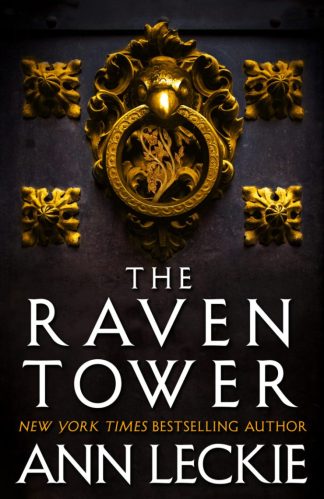
Listen. A god is speaking.
My voice echoes through the stone of your master’s castle.
This castle where he finds his uncle on his father’s throne.
You want to help him. You cannot.
You are the only one who can hear me.
You will change the world.
~~~~~
As has been well established here before, I am a big fan of Ann Leckie’s fiction, and hugely enjoyed her science fiction trilogy. I’m also a fan of big, complex, political epic fantasy that uses the second person (or rather, of The Fifth Season, the only book I know of which fits that criteria). So Ann Leckie doing big, political epic fantasy in the second person? Sign me up!
The Raven Tower is a brilliant retelling of a classic story. Without giving too much about Leckie’s textual inspiration away, the contemporary plot follows the beats of that story almost exactly, while retooling them to give the women more agency and less unjust punishment, and with a focus not on the central character of the original but on one of the side-characters as a lens through which to follow the action. The resolution is simultaneously inevitable and expected but also completely new as what has, up until that point, looked like a solely historical, secondary plot, is brought fully into the present.
That secondary plot in The Raven Tower is one of the brilliant aspects of the novel; the narrator tells, interspersed into the main action of the plot, their own story, a story that goes into the deep past of the world. The early parts of the secondary plot involve the appearance and evolution of life on the planet around the character, to give some impression of quite how deep that past is. With a very self-absorbed narrator and very little action, Leckie’s writing is beautiful and moving, and still manages to move the reader and action along; the solipsism of the character falling away as they start to interact more and more with others, and we see those ties changing and strengthening and forcing actions in fascinating ways.
The Raven Tower‘s narrator is not, of course, the protagonist; rather, the reader steps into the role of protagonist, as a trans man named Eolo, addressed in the second person. Eolo is the person whose eyes we follow the main plot, although in reality he is the aide to the focus of the action; a curious and intelligent young man, he’s a brilliant character, unfailingly loyal but also with an independence of thought and action that I really appreciated. His transition isn’t made a big deal of, though it is mentioned at a couple of points; the novel is totally accepting of his gender, although certain characters are at times potentially less so.
The rest of the cast of The Raven Tower are a bit of a mixed bag. Some of them fail to rise above their bases in the story that Leckie has reworked, especially Hibal as the usurping king and Oskel and Okim as his pawns who are given a much more full backstory but still escape largely without character. Even Mawat is a little flat, although in a very human way; he is essentially a character defined by his temper and his belief in a set way of the world. When the latter is shaken, the former comes out; there is very little emotionality other than anger to him, although that anger is well written and Leckie does convey how much it defines him.
It’s with the women that Leckie really builds on the source text to do a lot more. Zezume, Mawat’s mother-figure, is a complex and conflicted character with a lot of agency in the plot, although she also proves flawed in who and what she places her faith in; The Raven Tower has a strong theme around misplaced faith and the consequences of it. Tikaz is the strongest case of this; a woman whose father has pushed her at Mawat, and who Mawat was in the past infatuated with, but who rejected him, and is absolute in her independence. She’s a fantastic character, smart and willing to fight for her place and her status, and Leckie really makes her shine.
This might sound like a decent book but not an outstanding one. All the elements are there; the genius is in the way Leckie takes them all, and uses them to create something so fresh, new, and brilliant. There’s a lot more to be said about The Raven Tower, but a lot of it is spoilery, or small; the way Leckie writes indigenous peoples and imperialism into her story, the way global trade links play a key role in the world, the way there is no good or bad side in the ultimate view only different kinds of bad side… there is an awful lot to percolate, to the point where a full accounting would be many thousands of words. Or the length of the book itself.
In the end, The Raven Tower takes its source material, highlights some of the problems of it while solving or evading them, and marries it to a fantastic narrative that takes in deep time and divine conflict, to become probably the best fantasy novel of 2019. And 2018 isn’t even over yet…
DISCLAIMER: Ann Leckie is a friend. Review based on an ARC provided by the author.
Change of Direction… & CALLS FOR WORK!
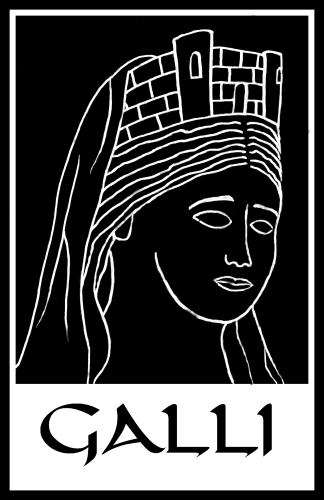
So, after years of commenting on other people’s books, other people’s writing decisions, other people’s publishing decisions; and after two years of selling books… I’ve decided to extend my tentacles into yet another arm of this industry.
I’m incredibly pleased and proud to be able to announce the foundation of GALLI BOOKS, a small press with inclusion and intersectionality core to its mission and themed anthologies of short speculative fiction as its (initial) output. Right now, we’ve got a website – galli-books.co.uk – and, indeed, we’re already opening our first anthology up for your work!
There is currently a Call for Submissions open for writers of fiction, nonfiction, and poetry, and a Call for Portfolios for artists – with the intention in mind of hopefully finding an artist who can grow alongside and with the press, doing the covers for all our future anthologies, dependent on how working together on this one goes!
Unfortunately, because I’m now a publisher (and that’s still a weird thought!), I’m having to reconsider the future of my reviewing; is it appropriate to review the work other publishers put out? I’m not deleting this site but there may not be any reviews this week while I think about the question. If you’ve got thoughts on the topic, please do comment so I’m not just thinking into the void of self!
Chalk by Paul Cornell
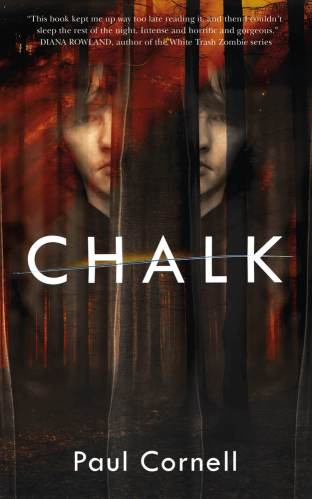
Andrew Waggoner has always hung around with his fellow losers at school, desperately hoping each day that the school bullies — led by Drake — will pass him by in search of other prey. But one day they force him into the woods, and the bullying escalates into something more; something unforgivable; something unthinkable.
Broken, both physically and emotionally, something dies in Waggoner, and something else is born in its place.
In the hills of the West Country a chalk horse stands vigil over a site of ancient power, and there Waggoner finds in himself a reflection of rage and vengeance, a power and persona to topple those who would bring him low.
~~~~~
Paul Cornell is perhaps best known for his work on Doctor Who, both as a novellist on the New Adventures years and as a TV writer for New Who; although his brand of urban fantasy, showcased in the Shadow Police and Lychford series, is also gaining popularity. Last year also brought us Chalk, out from Tor.com, a very different beast…
Chalk is a straight up rural horror novella of a very particular era in British history. Cornell conjures Wiltshire in the 1980s very powerfully, with the grip of Thatcher on a fraying, impoverished nation, with the failing old order and aristocracy, with the rising punk youth. He also conjures a sense of the ancient in conflict with the modern; the old order rising in new forms in conflict with the new, although he very much does not map these onto political or pop cultural movements neatly. Instead, the zeitgeist is a powerful force wrestled over by modernity and the ancient, as the old seeks to influence the new in dark and bloody ways.
This is a dark and brutal little story; Chalk starts with a violent sexual mutilation of a teenage boy by a group of others, and only gets more graphically violent from there. Cornell continually blurs the lines between the real and the metaphorical throughout, so that the brutality is at once incredibly close, and slightly distanced by the possibility of Waggoner lying; the reader is invited repeatedly to question the truth of the narrator’s account by the narrator himself, in a curious approach to the story that is incredibly effective. Everything is a set of different narratives seen differently by different people; is this just the self-justifying story Waggoner tells himself later, or is Andrew telling the truth about what happened throughout? The subtlety of that question and the openness of its answer, because Andrew Waggoner is our sole narrator and viewpoint, is central.
That ambivalence also extends to the characters of Chalk. This is a viciously honest book: no character is innocent and in the right; everyone is, in their own way, stained. Andrew commits violent, vile acts, including sexual harassment (which he, reflecting on his past, describes as such); but he is also the victim of vile and violent acts, which do not justify his own acts. His tormentors are in similar positions. The whole novella is an exercise in awful people doing awful things for awful reasons; Cornell makes it somehow compelling despite there not really being a single character to root for. A couple of the women of Chalk, namely Angie and Elaine, come closest to being sympathetic characters; but Elaine is too much a cipher acted on by others but barely herself acting, and Angie is too objectified by Andrew to really grow into her own character.
I’m not sure, in the end, how to feel about Chalk. What it is, is masterfully executed; but I’m not sure that the masterfully executed thing is worthwhile, especially given some of what it includes. This definitely shows the breadth of Cornell’s writing ability, though…
If you found this review useful, please support my ability to write by contributing to my Patreon.
The Only Harmless Great Thing by Brooke Bolander

In the early years of the 20th century, a group of female factory workers in Newark, New Jersey slowly died of radiation poisoning. Around the same time, an Indian elephant was deliberately put to death by electricity in Coney Island.
These are the facts.
Now these two tragedies are intertwined in a dark alternate history of rage, radioactivity, and injustice crying out to be righted. Prepare yourself for a wrenching journey that crosses eras, chronicling histories of cruelty both grand and petty in search of meaning and justice.
~~~~~
Brooke Bolander’s work has garnished any number of nominations, including multiple Locus, Hugo, and Nebula awards, among others. The Only Harmless Great Thing is her first solo volume; a slim novella out of Tor.com, it’s already picked up a lot of interesting buzz and an excellent marketing campaign… but does the novella bear out the speculation?
The Only Harmless Great Thing is a very odd book; it marries together alternate history with a science fictional future, in two parallel narratives, with a third, folkloric deep-history narrative running alongside those two. Bolander’s choices of narratives are not pleasant ones. The Only Harmless Great Thing is the story of an elephant, Topsy, brought with a little alternate history into the story of Regan, a Radium Girl. In Bolander’s world, elephants are discovered to have language and a degree of sentience in the 1880s, and so when the effects of radium were discovered, US Radium brought elephants in to paint the watches – one of whom is Topsy. In a parallel narrative, much later, Kat is trying to persuade elephants to allow humans to make them glow near nuclear waste dumps as a lasting warning about the presence of radiation, as a ten-thousand-year warning sign.
Bolander slips between the different narratives, registers, and narrators of The Only Harmless Great Thing with a skillful grace and ease that ties the whole thing together; the voices are very distinct, and that helps to distinguish between the stories as we slip between them. At times, it can be a little confusing for a few lines, but on the whole which narrative Bolander has the reader in rapidly becomes clear. The alternate and future histories are intertwined seamlessly with reality, and on the whole their revelation is well done; there are moments Bolander relies on knowledge that she hasn’t given the audience yet, but they’re few and far between.
This is a sparsely characterised novella; The Only Harmless Great Thing has a grand total of nine characters, which includes two pachyderms, one character who only speaks once and that through a post-mortem letter, an interpreter, a supervisor, an academic, a corporate executive, and a bitter Radium Girl. Of these, three are at various times viewpoint characters, and the rest appear only briefly; Bolander doesn’t make their characters much more than the flat necessities for the advancement of the plot, but her three core characters, those whose viewpoints we follow, are far better realised.
Each has a very unique voice and thought process, from the slangy dialect of Regan through to the mythopoetic style of thought of Topsy and the straightforwardly modern Kat. The Only Harmless Great Thing does a fantastic job of showing how Topsy’s and Regan’s lives parallel each other and how their struggles with forces outside and larger than themselves change them. There is a strong streak of radical politics on display in the work, and a class anger, that Bolander infuses with a kind of bleak despair at the state of the treatment of the working classes and of nature; and the way she uses that and filters it through her characters is incredibly powerful. The problem is Kat; Bolander’s treatment of her is uneven, and her character veers sharply between profoundly empathetic and profoundly disconnected, growing from one to the other and back again, and without any real sense of who she is as a person outside the project she proposed.
Finally, and almost without characters, is the deep-history myth-narrative that runs alongside these two core narratives. Bolander tells this in something akin to the style of a Just So story; and her style for these sections is absolutely beautiful and perfect, and the story itself is dark, moving, and painful. The Only Harmless Great Thing takes this extra piece of the jigsaw and moves, suddenly, from a two dimensional to a three dimensional puzzle, a complex narrative of interlocking parts with multiple messages; it’s only at the end that the relevance of this story becomes obvious to the others, in a very neat bit of writing.
The Only Harmless Great Thing isn’t a perfect novella, but it is a fantastic one; Bolander’s continues to go from strange, dark strength to dark, strange strength, and this continues that trend.
Disclaimer: This review was based on an ARC provided on request by the publisher, Tor.com.
If you found this review useful, please support my ability to write by contributing to my Patreon.


